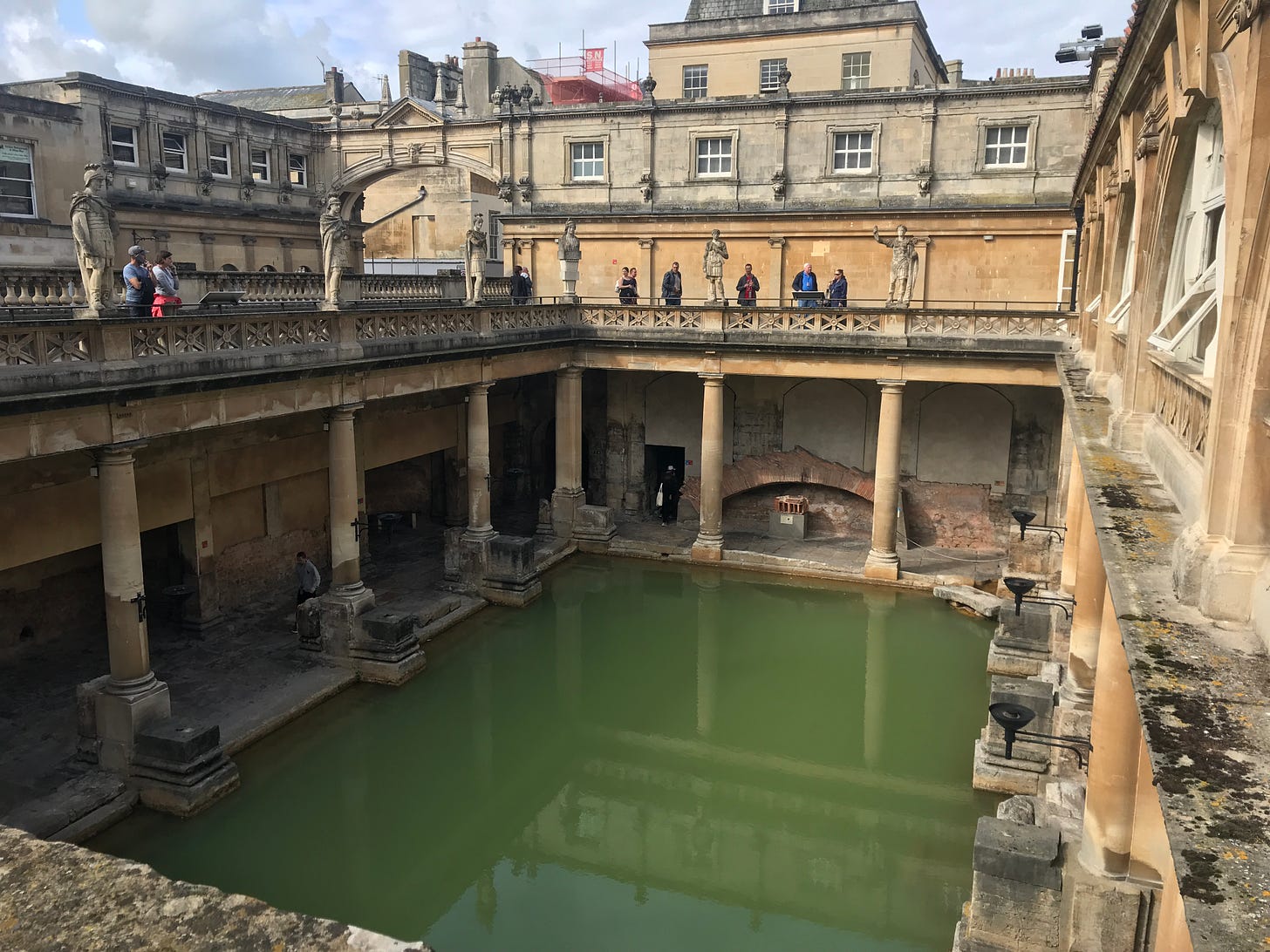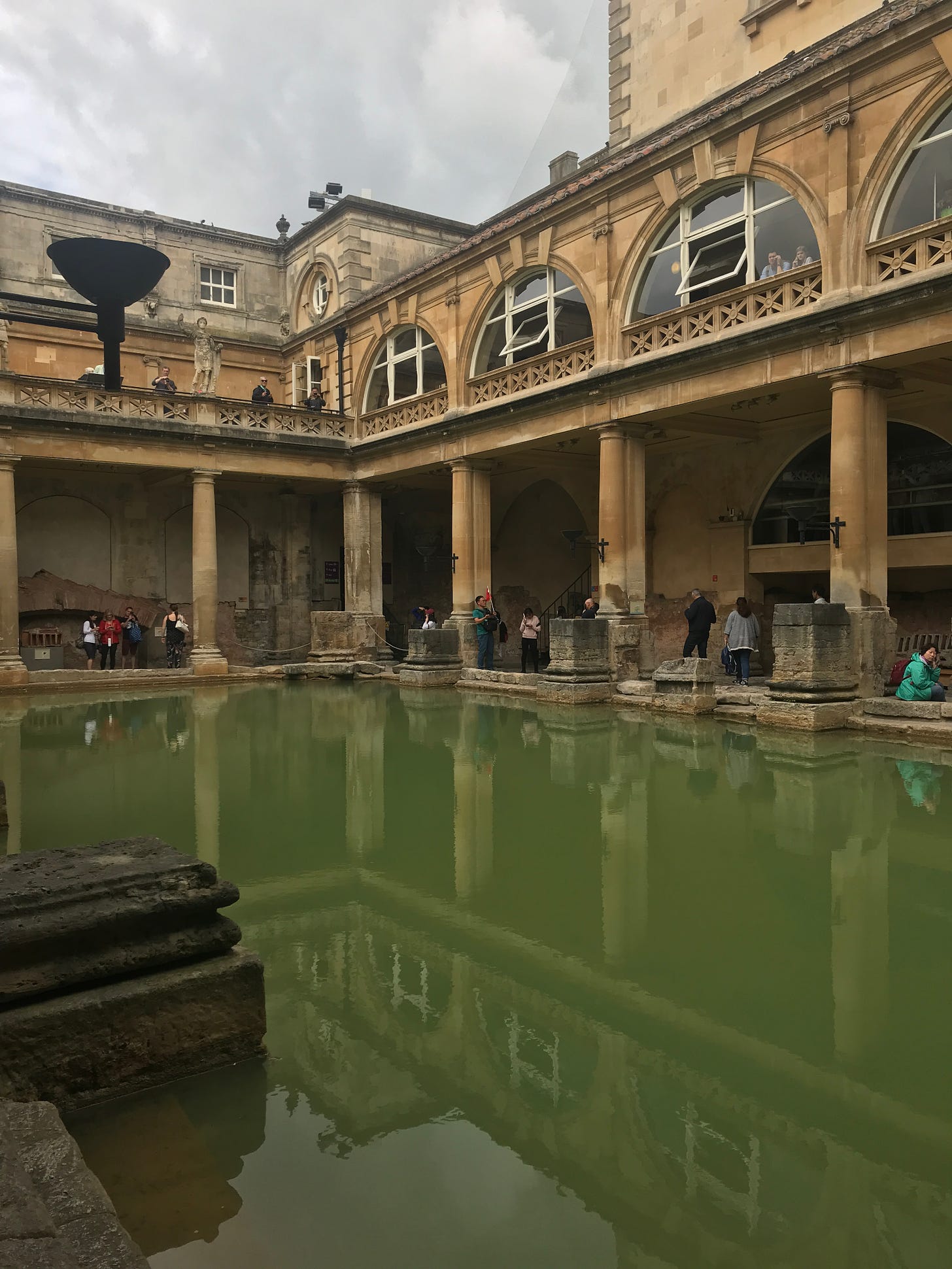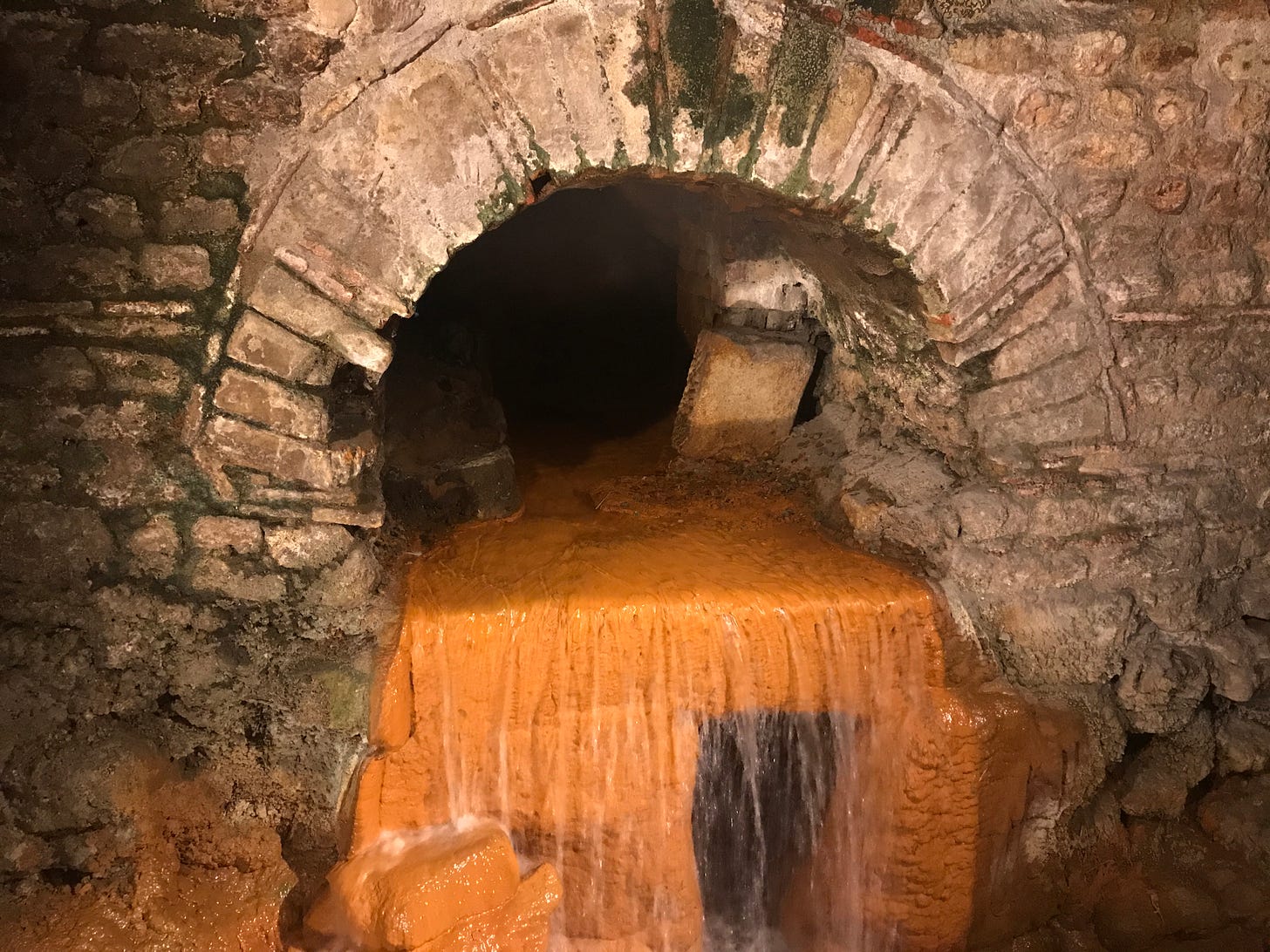Click to play if you would like to hear this post read
The City of Bath is regarded as one of the most interesting places to visit in the UK. You will soon see why it has become a World Heritage Site when you visit.
The Roman invasion of Britain began in earnest in AD43, during the reign of Emperor Claudius. Bath soon became known as a Roman town, and a temple was constructed between 60-70 AD. It has been occupied longer, and the Celts were settled here before the Romans arrived. The City of Bath is nestled in a valley surrounded by hills, and perhaps those early settlers were reminded of the seven hills of Rome. Of course, over the years, homes have been built on the hillsides as the population expanded.
The Romans loved their bathhouses and having a source of hot spring water made what is now the City of Bath an ideal location.
Where does the hot water come from?
The hot spring mineral water originates from the rainfall on the nearby Mendip Hills. This water then percolates down through limestone aquifers. It eventually falls to a depth of between 2,700 and 4,300 metres. The water temperature here rises to between 69 and 96 °C. Under pressure, the heated water rises along fissures and faults in the limestone until it bubbles up from the ground into the baths. The temperature of the water in the baths is 46 °C and over 250,000 gallons flow every day from a geological fault known as the Pennyquick fault.
The Roman Baths Museum
The baths remained in use by the Romans until their demise in the 5th century. An Anglo-Saxon chronicle of the 9th century AD shows the baths were in ruins a century after the Romans left.
The Romans and no doubt the Celts were drawn to this place because of the hot thermal springs. It wasn’t long before the Romans built substantial bath houses on the site, and the ruins and foundations are seen in the Roman Baths Museum. These early foundations have been preserved for all and are truly fascinating to visit. The museum has thousands of objects on display that give us a glimpse into the lives of the people living almost two thousand years ago.
Try to imagine the gossip and business deals done by those using the baths. The baths were community places where people would gather to tell their stories and I wonder if, like modern-day Britains, they always mentioned the weather.
The Romans built the baths in honour of their female god Minerva. The Romans were very good at integrating locals into their community, and keeping an existing god worshipped at this site would build a bond with them. Minerva seemed to have similar traits to Sulis, a Celtic god. The Romans called the town Aquae Sulis. Both gods were implored to carry out curses on those who had upset the curse giver. Curses written by Romans have been found that were cast into the spring for their god to act upon. Some of the curses are over the most trivial of things. It would seem the new Christian message of forgiveness being preached back in Rome had not reached them and certainly not acted upon! The recorded curses do show a vindictive attitude.
It was not only written curses that were given to the gods. Romans liked to cast money and objects of value into the sacred springs, hoping the gods would show favour. In the first century, a Roman Denarius was worth a day’s wages for the ordinary person. Over 12,000 denarii have been recovered, over 33 years of wages. Now, if only we had a time machine!
My great interest is in the Roman period of the Baths, but the buildings are also old and of outstanding architectural merit. The Pump Room, which attracts 1.3 million visitors a year, was begun in 1789 and completed ten years later. The City of Bath has many homes built around that period, making it incredibly beautiful. Today’s buildings at the Roman Baths above street level are all built on top of what was Roman. The Victorians added much between 1894-1897 to make the Baths a place for people to come “and take the waters”. Spa towns became very popular in the late 17th and early 18th centuries, and a revival of them occurred towards the end of the early 18th to mid 19th century.
The wealthy of the City of London could escape the smog and take the waters for a cure for their ailments by taking the train from Paddington to Bath. Great emphasis was placed on the curative powers of the thermal springs and the minerals they contain. A rheumatic hospital was opened, and a fine building was completed in 1742 for patients to soak in the curative waters. A new replacement specialist hospital has now been built on the site of The Royal United Hospital. The old Mineral Hospital is now in the hands of a property company and is likely to become a hotel.
People often enquire if swimming is allowed in the Roman Baths. Swimming is not permitted following the death of a young girl. In October 1978, whilst swimming in the Roman Baths, she contracted Naegleriasis, a nearly always fatal infection. You can safely enjoy the spa waters at Thermae Bath Spa and The Cross Bath. If you would like to taste the waters, a new bore was made in 1982 to provide a clean source of mineral water for drinking in the Pump Room.
Please visit the Roman Baths if you get the opportunity and allow at least 2 or 3 hours to take in as much as possible. An audio guide is supplied, and I found this to be excellent. The story of the people, the place, and the objects are well worth the entrance fee. The museum displays everything very well, and the foundations of the various baths and frigidarium (cold baths used after a hot one) are well lit to good effect.
I hope you have enjoyed this post; there are many more to come. Can I ask a favour? If you have not yet become a free subscriber, please do consider it. Simply add your email address in the box below, and you will receive each new post directly to your inbox.










